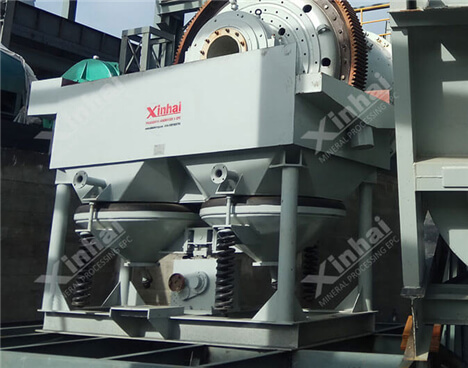If you want to know more information (such as product/process price, etc.), please contact us 24-hour telephone
In the iron ore mining sector, jigging technology holds a significant position due to its high processing capacity and low operating costs. Statistics show that about 42% of global magnetite iron ore concentrators use jigging as a core separation method. However, fluctuations in jigging efficiency often result in a 2-5% decrease in concentrate grade and a 3-8% loss in metal recovery. This article will analyze the core technical strategies for improving jigging efficiency from process parameter optimization to equipment upgrades across the entire process.
Experiments on the amplitude-frequency coordination of jigging machines found that for 10-30 mm coarse magnetite ore, an amplitude of 8-12 mm and a frequency of 60-70 cycles per minute can increase the stratification speed by 23%. For -5 mm fine hematite ore, reducing the amplitude to 5-8 mm and adjusting the frequency to 80-100 cycles per minute can improve the fine particle recovery rate by 18%.

Introducing intelligent flow velocity monitoring devices allows the system to automatically adjust the flow velocity within the range of 0.2-0.35 m/s when the feed grade fluctuates by ±3%. In one concentrator, the Fe grade of the concentrate was stabilized at 65% ± 0.5%, resulting in an annual increase in revenue of over 8 million yuan.
Using X-ray pulp concentration real-time monitoring instruments, the feed concentration can be precisely controlled within the range of 25-35%. Data shows that deviating from the optimal concentration by 5% can reduce the separation efficiency by 12-18%.
Adopting a crushing system consisting of jaw crushing + cone crushing + high-pressure roller grinding ensures that more than 90% of the feed material is less than 15 mm in size, improving the stability of the jigging bed by 31%. Equipped with multi-layer high-frequency screening equipment, the screening efficiency reaches 92%.
Combining cyclones with high-frequency dewatering screens can reduce the mud content of -0.045 mm particles to below 3%. In a hematite ore case study, desliming reduced the medium consumption by 45% and increased the equipment processing capacity by 28%.
Using a magnetite suspension with a density of 2.8-3.2 g/cm³ as the medium, the separation precision Ep value can reach 0.08 for -3 mm fine iron ore particles, a 40% improvement over conventional processes. Equipped with a medium recovery system, medium loss can be controlled below 0.8 kg/t.
Building a "jigging-magnetic separation-flotation" integrated process, dynamic adjustment of process parameters is achieved through an intelligent control system. In a mixed ore case study, the comprehensive recovery rate was increased to 89.5%, a 12% improvement over single jigging processes.
| Machine Type | Processing Capacity (t/h) | Energy Consumption (kWh/t) | Separation Precision Ep Value |
|---|---|---|---|
| Traditional | 20-30 | 2.8-3.5 | 0.12-0.15 |
| Intelligent | 35-50 | 1.6-2.2 | 0.08-0.10 |
Installing vibration spectrum analyzers and temperature sensors achieves a fault warning accuracy of over 95%, reducing unplanned equipment downtime by 70%.
Establishing a digital twin system for jigging processes allows for the analysis of historical production data using machine learning algorithms to quickly generate parameter optimization schemes. In one concentrator, the debugging cycle was shortened from 15 days to 3 days, and the standard deviation of jigging efficiency decreased by 82%.
Through coordinated improvements in process parameter optimization (35%), equipment upgrades (25%), intelligent control (30%), and management enhancement (10%), our EPCM+O services have helped 23 clients achieve a 40-65% increase in jigging efficiency. Click to obtain customized jigging process optimization schemes, with professional teams providing full-cycle services from experimental research to production optimization.